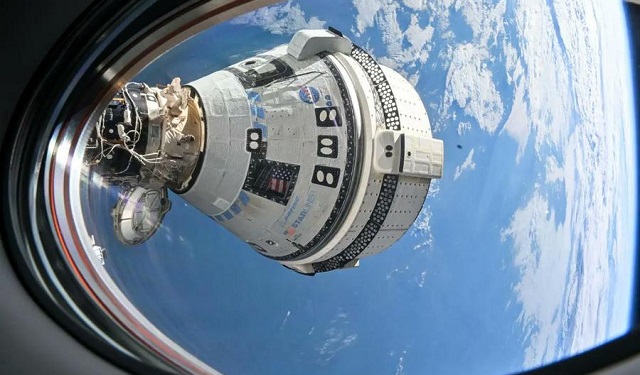
NEW YORK, the United States | Xinhua | Boeing’s Starliner spacecraft landed at the U.S. state of New Mexico early Saturday after a journey of approximately six hours from the International Space Station (ISS), with no astronauts on board, as two astronauts were forced to remain in space until next year due to a technical malfunction.
The uncrewed spacecraft autonomously detached from the ISS at approximately 6:04 p.m. Eastern Time (1004 GMT) on Friday and landed at New Mexico’s White Sands Space Harbor at approximately 12:01 a.m. Eastern Time (1601 GMT) on Saturday, completing its first human spaceflight mission.
NASA astronauts Butch Wilmore and Suni Williams were aboard the Starliner spacecraft from Florida’s Cape Canaveral Space Force Station on June 5 and arrived at the ISS on June 6.
During Starliner’s approach to the orbiting laboratory, NASA and Boeing identified helium leaks and faced issues with the spacecraft’s reaction control thrusters.
Initially, the astronaut duo was scheduled to stay at the ISS for eight days. However, they have already spent three months in space due to technical complications.
NASA ultimately decided that sending the two astronauts home on Starliner was too risky. The new plan is to have the two astronauts ride home on a SpaceX Dragon spacecraft in February 2025, and have Starliner return to Earth uncrewed.
The decision to return the Starliner spacecraft without crew marks a significant setback for Boeing, following years of delays that have already pushed its first crewed flight nearly four years behind schedule.
Both Boeing and SpaceX were awarded multibillion-dollar contracts from NASA in 2014 to transport astronauts to replace the agency’s space shuttle fleet, which retired in 2011.
While SpaceX successfully began ferrying NASA astronauts to the ISS in 2020, Boeing has faced repeated mechanical and software issues with its Starliner spacecraft, delaying its inaugural crewed mission until June of this year.
NASA had previously indicated that this mission could be the final hurdle before certifying Starliner for regular use. It remains unclear how the technical problems encountered during the mission would affect Starliner program. ■
 The Independent Uganda: You get the Truth we Pay the Price
The Independent Uganda: You get the Truth we Pay the Price



